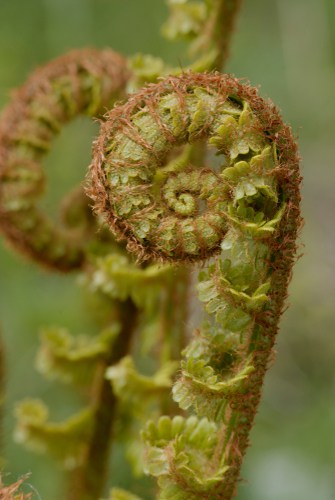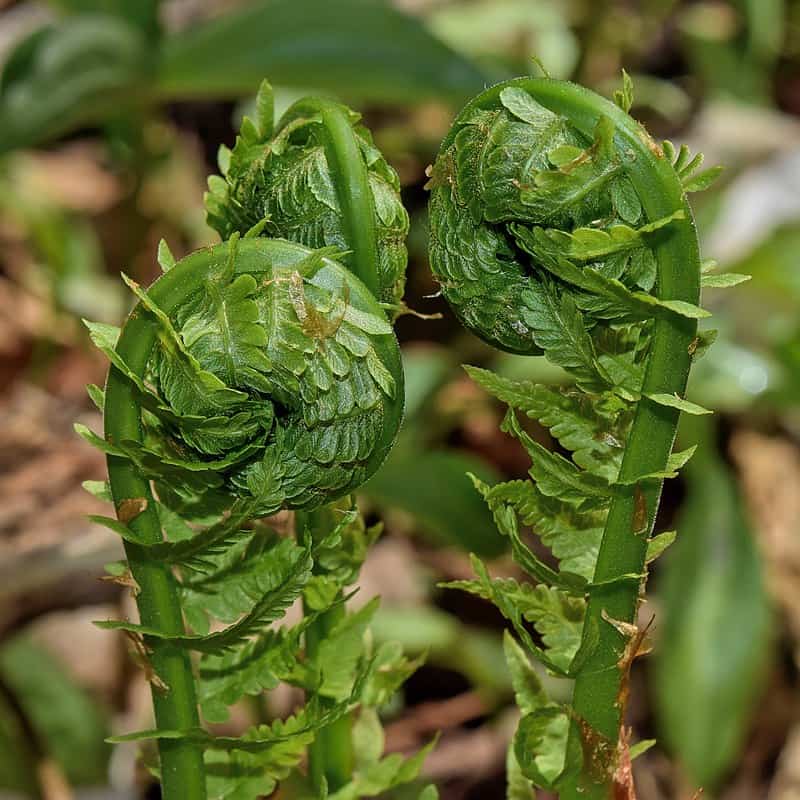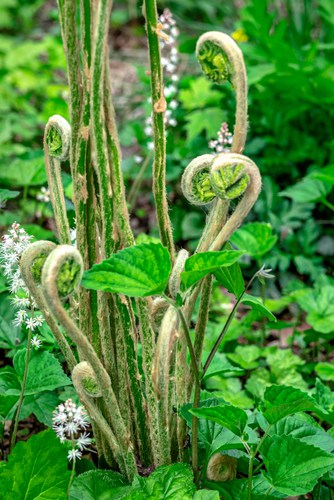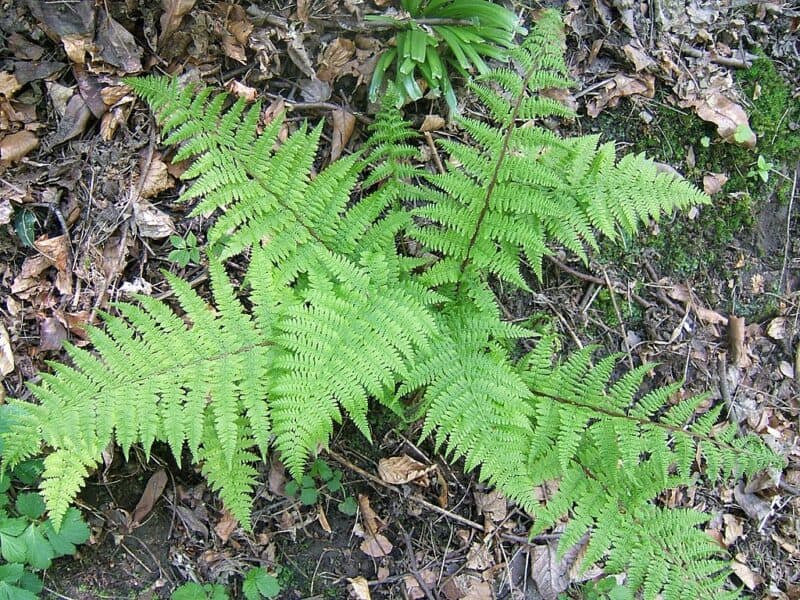If you’ve never eaten a fern, the idea of eating one may sound strange to you. It’s likely that you picture fully mature fern fronds mixed into a salad. However, this isn’t what people mean. When we talk about edible species of ferns, we’re talking about a very young fern with furled fronts called fiddleheads. This is a highly prized but rare type of food that only grows for two weeks per year, and only some versions of them are edible. Moreover, the edible types of fiddlehead ferns need to be properly prepared in order to be eaten safely. With so many specific conditions needing to be met, it’s no wonder that ferns are so rarely eaten.
Are Ferns Edible?
Yes, very specific types of young ferns are safely edible when properly prepared.

Bracken fiddleheads are commonly found around the world and are considered edible. However, they are toxic if not properly cooked. Never eat them raw. These are one of the most common types of fiddleheads around, especially in the United States. Their scientific name is pteridium aquilinum

Lady Fern is found across the Northern Hemisphere, mostly in temperate climates. Foragers in the Pacific Northwest are usually looking at Lady Fern when they are harvesting fiddleheads. Their scientific name is athyrium filix-femina.

Ostrich Fern Fiddleheads are mostly found in the New England region of the United States. Mature Ostrich Ferns have fluffy fronds that look a lot like ostrich feathers, which explains their name. Their scientific name is matteuccia struthiopteris.

The Cinnamon Fern is also considered an edible fern, but they’re less common. You can find them on the east coast of North America. They don’t taste as great as Ostrich Fern Fiddleheads, so foragers don’t seek them out as much as the Ostrich and Bracken varieties.
What Happens If You Eat Toxic Fiddlehead Ferns?
If a fiddlehead fern is eaten when not properly prepared, the person can expect to experience the symptoms of foodborne illness anytime within the next 12 hours. It’s best to seek out medical attention if you know you’ve eaten a toxic fiddlehead. Symptoms can include headaches and stomach issues like abdominal cramps, committing, diarrhea, and nausea. The symptoms in a pet may be more severe.
Can I Eat Fern Fiddleheads Raw?
You may see people online swearing that they love to eat fiddleheads raw, but this is not a good idea. You run the risk of getting a foodborne illness when eating ferns raw. Scientists have given a variety of reasons why this may happen. It could be that there are particular bacteria growing on the fiddleheads that make people sick when eaten raw, and these are safely neutralized during the cooking process. It’s also possible that there is a natural toxin in fiddlehead ferns that we haven’t identified yet. Whatever the case, fiddleheads should always be cooked before consuming them.
Theoretically, in a survival situation, you could eat the fiddleheads raw and take the precaution of washing them in water first to try and remove any bacteria. However, that is a theoretical survival situation where you were lost in the woods during the two weeks that fiddleheads are in season, so is fairly unlikely.
In most situations, you’ll want to cook them first. Many agree that the best way to do that is to blanch them. This consists of putting the fiddleheads into a pot of boiling water with a couple of teaspoons of salt for two minutes. You can season them while you let them cool and then eat them. This cooks off any toxins and gives you fresh fiddleheads that still have some crunch to them.
When Can You Find Edible Ferns?
You’ll first find a young fern plant growing in early spring. In North America, the best time of year to find tightly coiled fiddleheads is in late April. They can sometimes be found all the way into June. The ferns will only keep the tightly coiled fiddleheads for about two weeks.
Where Do Fiddleheads Grow?
Ferns love to grow in shady areas in the woods. You’ll find them making their homes in moist soil. You may see ferns growing right along the trail, but a lot of fiddleheads will be a little ways off the path where they are away from getting trampled by animals and hikers. Take some paths through hardwood forests with moist soil in the early spring through early June, and you’ll likely start noticing these tightly coiled fiddleheads popping up only a few inches from the ground.
What Do Ferns Taste Like?
Edible fern species are surprisingly delicious. On their own, bracken fiddleheads taste like a combination of asparagus, broccoli, and spinach. The Lady Gern and Ostrich Fern have both been described as tasting more like kale and asparagus with a blend of almonds. It’s not surprising, then, that many people enjoy a well-prepared fiddlehead with some lemon juice or a little butter. It’s also common to fry them up in some olive oil, but keep in mind that it’s easy to overcook a fiddlehead or cook them unevenly. Blanching them is the easiest way to cook them thoroughly without overcooking them. When overcooked, a fiddlehead will be mushy and bland.
How To Recognize Edible Fiddleheads In The Wild
As a general rule, you always want to use at least two trusted sources when identifying wild edibles. Even moderately experienced foragers have eaten fiddleheads they shouldn’t have a time or two, so be particularly careful and mindful when harvesting any wild plants, even if you’ve done so in the past.
With that warning out of the way, fiddleheads will first spring up out of the ground furled and bright green. You want to look for new fronds that are only one to two inches above the ground. You can use scissors to cut the fern’s green stem or snap it off with your fingers. You can cut the stem an inch below the furled fiddlehead.
The fiddleheads should have a brown papery covering. You want to remove the brown papery looking covering before you eat them.
If they have a white papery-looking covering, do not pick them. The white papery covering is a sign that you have a fern that should not be eaten.
Do not eat them if they are unfurled, either. You are looking for tightly coiled fiddleheads.
When picking fiddleheads, always check the freshly snapped stem. The stem should have a u-shaped groove. This u-shape looks a lot like a celery stalk, only smaller. If the fern’s stem is a complete circle instead of a u-shaped groove, then do not eat it. You likely have a species of fern that is not edible.
While harvesting edible ferns, keep in mind that it is considered good form to only take a few fiddleheads from one particular spot. You can add fiddleheads to a nice little meal while only taking small quantities from the woods. This way, others can find fiddleheads, and they will hopefully regrow in the next year. Overharvesting this rare treat is a common problem and one that annoys your fellow foragers.
Can You Eat Fiddleheads Without Foraging Them Yourself?
It is a rare grocery store that sells fiddleheads. However, you can find them. If you wish to purchase edible ferns, you want to look in the early spring at your local farmers’ market You can also check Asian markets. At these stores, they often sell dried fiddleheads that have been saved so people can enjoy them year-round.
Recent Posts
The only venomous snakes in Washington State are Northern Pacific Rattlesnakes. The Northern Pacific Rattlesnake (Crotalus oreganus oreganus) is a sub-species of the Western Rattlesnake. Anyone...
Skunks are not classified as true hibernators. But they go into a state of torpor when the weather gets cold. Skunks are light sleep hibernators, along with opossums, bears, and raccoons. ...

